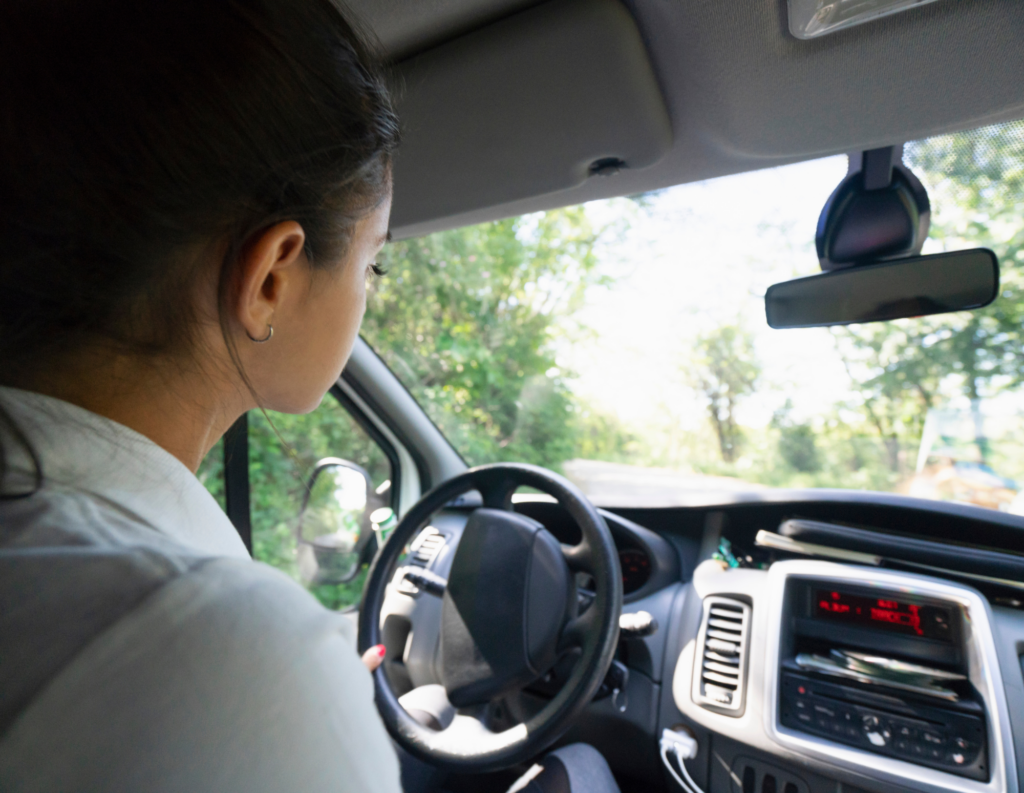Navigating tax season is difficult for business owners. This article explains how to track mileage for taxes so you can get the most accurate deductions possible for your business. .
Tax time isn’t known as the best part of the year for small-business owners, but this doesn’t mean it has to be stressful. Knowing which deductions you can report for business purposes can help you lower your tax burden while keeping more money in your bank account for all of your business’s needs.
One of the most common deductions independent business owners can report is the number of miles they drove for business purposes. That’s right—the Internal Revenue Service (IRS) will give you money back for each mile driven to or from a business activity as long as you’re specific when describing the nature of your trip.
The trick is learning how to record your mileage and report it to the IRS.
Jump to:
- Am I able to deduct my mileage as a business expense?
- How do I keep track of mileage for tax purposes?
- How to deduct your mileage during tax filing
- When to choose the standard mileage or expense method
- Keep track of additional business expenses
- Invest in the right software to manage payments and expenses
Am I able to deduct my mileage as a business expense?
Before deducting your mileage on your tax return, you need to meet the specific criteria set by your tax authorities. For self-employed individuals, independent contractors, and business owners, your miles can be deducted if they’re for business activities and don’t include general commuting. This includes trips made for meeting clients or purchasing business supplies, or any other travel that’s strictly for business purposes.
To track your mileage and deduct it on your tax return, you need to know the standard mileage deduction rate. For example, in 2024, the rate was set at $0.67 per mile, which not only includes the cost of gas but also accounts for wear and tear on the vehicle, repairs, and maintenance. This rate is an increase from 2023’s $0.65 per mile.
In order to use the standard mileage rate for your car, you need to apply it to the first year your vehicle was available for business use. In later years, you can always choose between the standard mileage rate and your actual expenses.
How do I keep track of mileage for tax purposes?
1. Create a system to track your mileage
The first step to tracking mileage for taxes is understanding that you’re eligible. In nearly all cases, anyone who is driving their personal vehicle for work can take a tax deduction for those miles—as long as they aren’t being reimbursed elsewhere.
As an Independent business owner, you’re likely using your personal car to drive to client meetings, events, conferences, stores to get supplies, and much more. Unlike corporate employees, you also probably aren’t getting reimbursed in the form of a stipend or company car.
Each mile you drive adds up fast, which is why it’s important to develop a strategy to track your miles. We’ll dive more into specific tools to log your miles, but for now, think about an easy system that makes sense for you. You can write down your odometer reading once a week if you want a manual process or use a mileage tracker app that helps you record your daily miles.
2. Always track total mileage
Even once most small business owners start tracking mileage, they aren’t tracking the total miles that are eligible for deductions. You might not think the smaller trips count or even think of certain trips that fall under the business category, but they’re all eligible! You should be documenting all of the following (and more):
- Client visits
- Conferences
- Job site visits
- Getting gas
- Grabbing food for a meeting or event
- Trips to buy office supplies

3. Keep an updated log of miles driven
In a perfect world, you should be keeping a mileage log for your business miles every day. However, the United States Tax Court says that it’s sufficient if you note your miles at least once per week. Keeping a contemporaneous log means that you have a record of your miles that you can present to the IRS.
In one court case, a manager for a construction company claimed a $28,504 deduction for one year. He lost an IRS audit but won on his appeal to the Tax Court. The Court said that it was sufficient that once per week he recorded his business miles in a calendar, as well as the nature of his daily business activities and weekly travel. (Ressen v. Comm’r, T.C. Summ. Op. 2015-32.)
However, you’ll avoid problems with the IRS, if you record your business miles each day, or use a mileage tracking app to automate the process and record each drive as it happens.
4. Use your home office as a principal place of business
While you can take a tax deduction for the work miles you drive, you can never deduct your commute to and from work. This means that you can’t deduct your drive to and from your principal office. If you don’t have a regular office, you cannot deduct your drive from home to your first business event or from your last appointment to home.
However, one way to avoid the commuting rule is to have a home office that qualifies as your principal place of business. In this event, you can take a mileage deduction for any trips you make from your home office to another business location. You can deduct the miles you drive from home to your second office, a client’s office or to attend a business-related seminar.
The commuting rule doesn’t apply if you work at home because, with a home office, you never commute to work since you’re there already. As long as you follow IRS guidelines, you can also deduct your home office expenses.
5. Know which total miles you can deduct
This one might sound a bit silly, but we get this question every day! The short answer is that you can deduct ANY driving you do for business, as long as it’s not your commute and you weren’t reimbursed for it.
Examples of deductions that are often overlooked include: Travel between offices, running errands or picking up supplies, business meals and entertainment, trips to the airport for business trips, customer visits, and trips to temporary job sites.
Additionally, if you’re job hunting, you can deduct the miles that you drive to find a new job in your current occupation. But, you can’t take the deduction if you’re looking for a job in that field for the first time.
How to deduct your mileage during tax filing
When it’s time to file your taxes as a small business owner, you’ll need a Schedule C form along with your standard form 1040. If you use any type of online tax filing system, they’ll automatically take the information you provide to fill and submit the form for you.
Many systems will also automatically convert your mileage log into the total deduction amount. However, if you need to do the math, the standard mileage rate is 65.5 cents/mile driven for business use.
When to choose the standard mileage or expense method
If tracking and logging your mileage seems like too much work, you can also choose to deduct actual car expenses. With the expense method, you’re able to add up everything that goes into operating the car, such as gas, lease payments, tires, repairs, insurance, and registration fees.
The method you choose is all dependent on what would be most beneficial for your business. However, if you want to use the standard mileage method, you have to do so during your first year in business. Afterward, you can switch back and forth between the two methods if you choose to do so.
Keep track of additional business expenses
While running your business, you can also deduct additional travel-related expenses, such as parking fees and tolls. Be sure to view a full list of business tax deductions each year to think through what you’re eligible to report and which category each deduction falls into.
As you’re filing your taxes and deductions, just keep in mind that you need to keep your business and personal expenses completely separate. You won’t be allowed to report any deductions for personal expenses.
Invest in the right software to manage payments and expenses
It’s pivotal for small-business owners to arm themselves with an efficient system for tracking not just mileage but also a wide array of business expenses as tax season approaches. HoneyBook offers a robust clientflow management platform that not only helps you manage your payments and client interactions, but our tool also helps organize all of your business-related expenses.
By integrating HoneyBook into your daily operations, you can seamlessly categorize and document your expenses to maximize your tax deductions and savings. Don’t let the stress of tax filing bog down your business operations. Use HoneyBook’s expense tracking system to streamline the process and save time while maximizing your potential tax savings.




